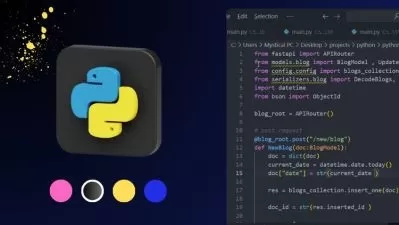Detection-as-Code in IBM QRadar
Daniel Koifman
1:25:28
Description
Learn how to implement a Detection-as-Code practice in the context of IBM QRadar, Github and Python
What You'll Learn?
- Implement detection-as-code methodologies within IBM QRadar to enhance security operations efficiency.
- Automate deployment of detection rules in IBM QRadar
- Understand how Detection-as-code works in the context of QRadar
- Implement detection-as-code functionality using Python
Who is this for?
What You Need to Know?
More details
DescriptionHi everyone, and welcome to my 2nd course - "Detection-as-Coode in IBMÂ QRadar".
This course provides a comprehensive, hands-on introduction to leveraging Detection-as-Code (DaC) principles within IBM QRadar, enabling security professionals to automate and streamline threat detection. Participants will learn how to design, develop, and implement detection rules in a reusable and scalable manner, enhancing the efficiency and consistency of their security operations.
Key topics include building reusable detection rules, leveraging GitHub as a central repository for managing detection content, and integrating DaC methodologies into QRadar workflows. Participants will also explore how to automate the deployment of detection rules.
The course emphasizes practical application through interactive demonstrations and real-world scenarios, ensuring learners gain the skills necessary to build and manage detection mechanisms that can evolve with changing threat landscapes. By the end of the course, participants will be able to develop, deploy, and maintain scalable, automated detection solutions using QRadar’s full capabilities.
This course is ideal for security analysts, administrators, and engineers looking to enhance their QRadar workflows, reduce manual effort, and improve their organization’s threat detection and response capabilities through automation.
I truly hope you will enjoy the material, and that you take some things into your day-to-day career. Thank you!
Who this course is for:
- Security analysts and engineers familiar with IBM QRadar looking to automate and code detection rules.
- SOC professionals aiming to integrate detection-as-code methodologies into their security operations.
- Developers and IT specialists interested in enhancing threat detection by coding custom rules in IBM QRadar.
Hi everyone, and welcome to my 2nd course - "Detection-as-Coode in IBMÂ QRadar".
This course provides a comprehensive, hands-on introduction to leveraging Detection-as-Code (DaC) principles within IBM QRadar, enabling security professionals to automate and streamline threat detection. Participants will learn how to design, develop, and implement detection rules in a reusable and scalable manner, enhancing the efficiency and consistency of their security operations.
Key topics include building reusable detection rules, leveraging GitHub as a central repository for managing detection content, and integrating DaC methodologies into QRadar workflows. Participants will also explore how to automate the deployment of detection rules.
The course emphasizes practical application through interactive demonstrations and real-world scenarios, ensuring learners gain the skills necessary to build and manage detection mechanisms that can evolve with changing threat landscapes. By the end of the course, participants will be able to develop, deploy, and maintain scalable, automated detection solutions using QRadar’s full capabilities.
This course is ideal for security analysts, administrators, and engineers looking to enhance their QRadar workflows, reduce manual effort, and improve their organization’s threat detection and response capabilities through automation.
I truly hope you will enjoy the material, and that you take some things into your day-to-day career. Thank you!
Who this course is for:
- Security analysts and engineers familiar with IBM QRadar looking to automate and code detection rules.
- SOC professionals aiming to integrate detection-as-code methodologies into their security operations.
- Developers and IT specialists interested in enhancing threat detection by coding custom rules in IBM QRadar.
User Reviews
Rating
Daniel Koifman
Instructor's Courses
Udemy
View courses Udemy- language english
- Training sessions 9
- duration 1:25:28
- Release Date 2024/12/05











